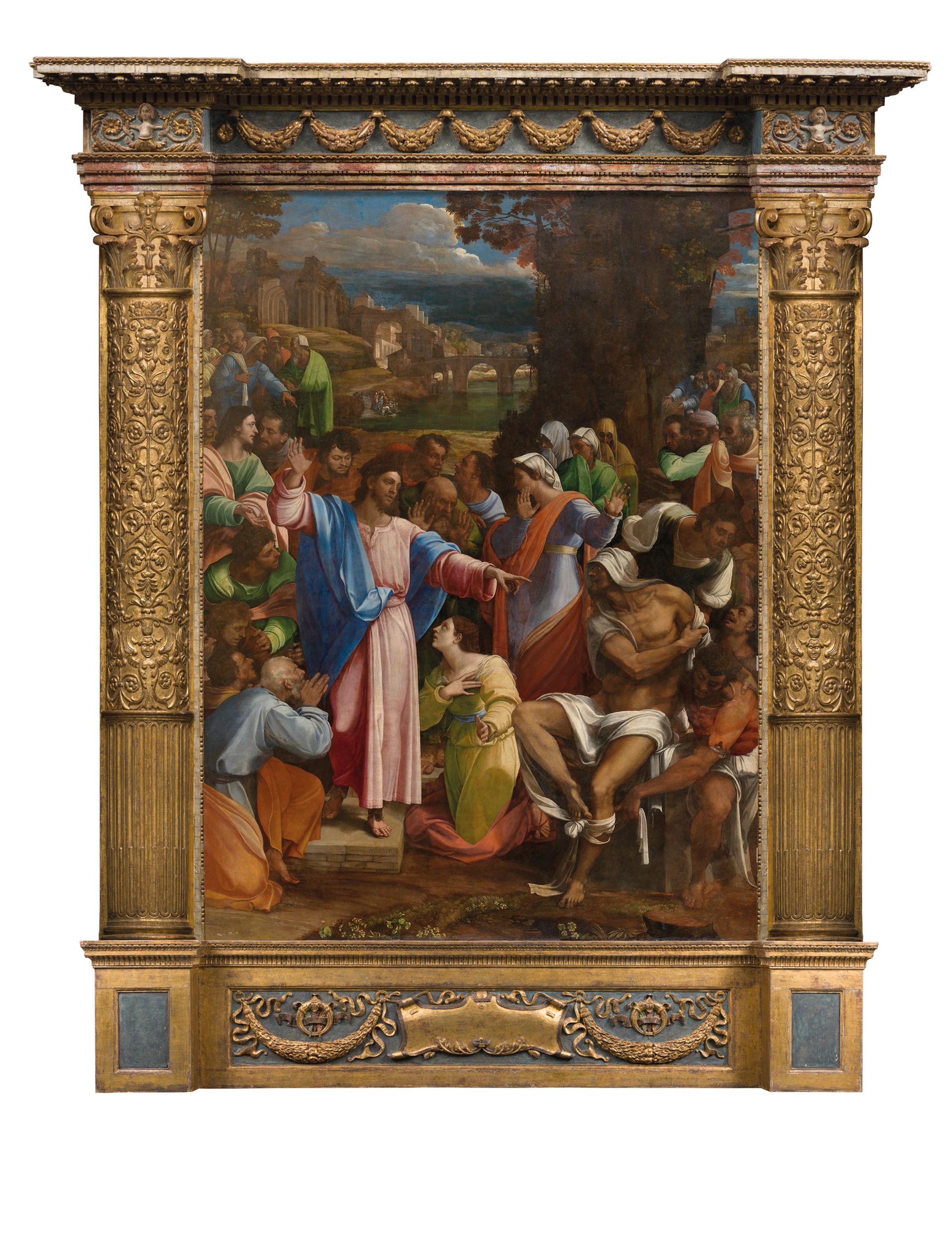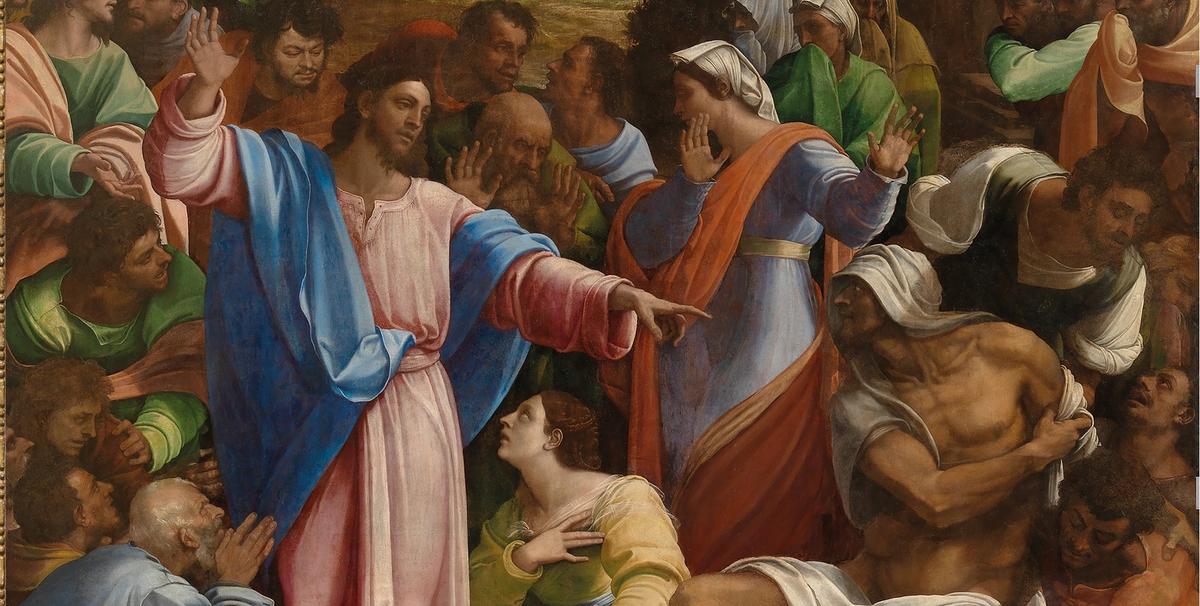The heart of The Credit Suisse Exhibition: Michelangelo & Sebastiano at the National Gallery, London (until 25 June), is the gallery’s own painting, The Raising of Lazarus (1517-19) by Sebastiano. Not only is it the largest work on display (9ft 5in x 12ft 5in / 289.6cm x 38cm), it is also revealed in a magnificent new frame. But size and array are incidental to the reality that this work embodies: without Michelangelo, Sebastiano would have little to recommend him.

The exhibition turns on the year 1511 when the 26-year-old Venetian artist arrived in Rome. There he was soon befriended by Michelangelo who helped and promoted his talented admirer, providing him with cartoons, sketches and drawings for such works as the Viterbo Pietà (1513). The open secret of their relationship won Sebastiano the major commission (1516) to decorate the Borgherini family chapel in San Pietro in Montorio, a project in which Michelangelo actively assisted. The culmination of their friendship came in 1516 when, on the Tuscan artist’s recommendation, Sebastiano was commissioned by Cardinal Giulio de’ Medici, to paint one of two large altarpieces for the cardinal’s titular cathedral. For The Raising of Lazarus, Michelangelo supplied sketches and drawings (on show) to ensure its triumph over the other work, a Transfiguration, which had been given to Raphael, Michelangelo’s arch rival. According to Vasari, Sebastiano was “praised by all without exception”, but his glory was clouded by Raphael’s death only days before the public display, and Michelangelo’s return to Florence deprived him of the immediate help he had come to enjoy.
But by then Sebastiano was assured of the favour of the cardinal (shortly to become Pope Clement VII), and, after 1531 when he secured the appointment to the sinecure of Keeper of the Papal Seal (made of lead, piombo, hence his soubriquet), his production slowed. Sebastiano and Michelangelo had a terminal falling out in 1534. Sebastiano del Piombo died in 1547.
What becomes clear from the show’s continuous juxtaposition of Michelangelo’s drawings and Sebastiano’s paintings is not only the latter’s dependence on the former’s help, but also the inferiority of his independent works. The Lazarus is a stunningly powerful figure only because Michelangelo, the greatest master ever of the male nude, supplied the drawings. The surrounding figures are stock characters. And so it goes on. The epigone limps while the master strides through all six rooms.
• The Credit Suisse Exhibition: Michelangelo & Sebastiano, National Gallery, London, until 25 June


